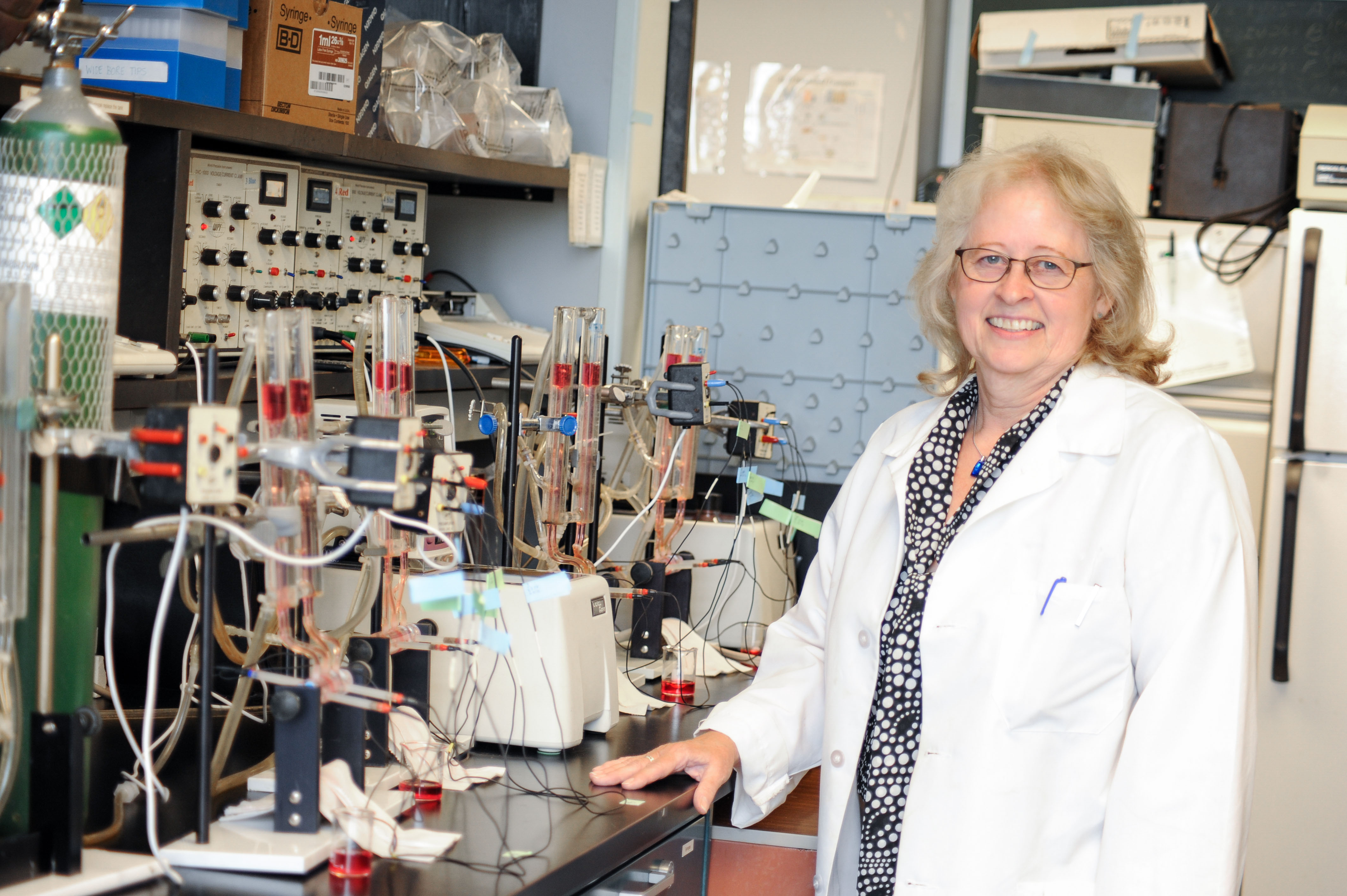Using funds from a $7.8 million Department of Defense Focused Program grant, Bonnie Blazer-Yost and Teri Belecky-Adams, both professors in the Department of Biology, will team up with scientists from Johns Hopkins University to test the effectiveness of treatments for three types of hydrocephalus — genetic, post-hemorrhage and post-traumatic hydrocephalus — either individually or as a “triple co-therapy.”
“While most people are familiar with hydrocephalus in children, the prevalence is higher in adults because of things like traumatic brain injury and stroke,” Blazer-Yost said. “The impact of this research will move us further in understanding the process of hydrocephalic development and hopefully also move us closer to finding a drug to treat hydrocephalus.”
Due to the absence of effective drug treatments, she added, surgery to add a drainage shunt in the brain is currently the only viable treatment for hydrocephalus — a process that must repeat every two years in some patients. The condition is estimated to affect nearly 1 in 1,000 births; in adults with head injury, studies have shown incident rates ranging as high as 1 in 2. The medical cost of hydrocephalus is estimated at over $1 billion annually.
A second award — a $3.9 million Department of Defense Expansion Award — is a collaboration between Blazer-Yost and researchers from Purdue University. The group intends to test an oral drug candidate — a molecular compound known as TRPV4 antagonist — in a model of post-hemorrhagic hydrocephalus, a common complication of brain hemorrhage or traumatic brain injury due to the disturbance in the flow or absorption of cerebrospinal fluid.
The Department of Defense is funding the awards in part due to the agency’s interest in new treatments for conditions that affect active personnel, as well as veterans, Blazer-Yost said.
The work supported under the second grant builds upon previous research from Blazer-Yost’s lab that has shown strong pre-clinical evidence that a TRPV4 antagonist may effectively relieve pressure on the brain from hydrocephalus. In 2019, Blazer-Yost was issued a patent for this compound with assistance from the IU Innovation and Commercialization Office.
Both projects will form the basis of a new Hydrocephalus Research Center at the School of Science at IUPUI. The center will serve as a focal point for collaboration and communication between researchers involved in discovering solutions to this debilitating condition. Together with the established relationships with Johns Hopkins and Purdue, it will encourage collaboration in hydrocephalus research locally and internationally.
“These grants are a shining example of the tremendous contributions that School of Science faculty provide to the science of health care for the state of Indiana and beyond,” Dean John F. DiTusa said. “This work will shape a brighter future for Hoosiers and is a great example of the benefits of Indiana’s leading urban research university. The addition of a center for hydrocephalus research is an incredible way to inspire passion and scientific collaboration not only among students and faculty researchers in Indianapolis, but also on a national and global level.”
The Hydrocephalus Research Center is expected to open as early as this fall. The combined grants will provide opportunities for undergraduate, graduate and postdoctoral students who will shape the next generation of hydrocephalus research and become tomorrow’s health science leaders.
The research partners on the grants are Shenandoah Robinson and Lauren Jantzie at Johns Hopkins University and Tim Bentley, Robyn McCain and Greg Knipp at Purdue University.



